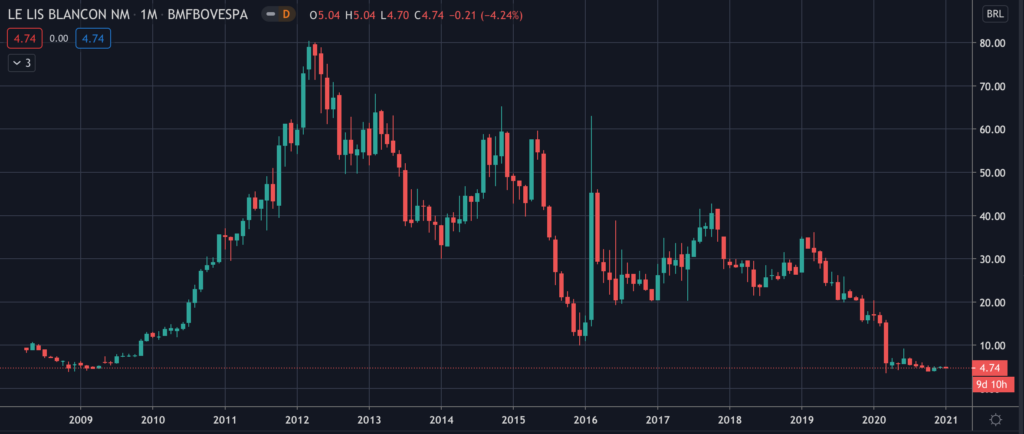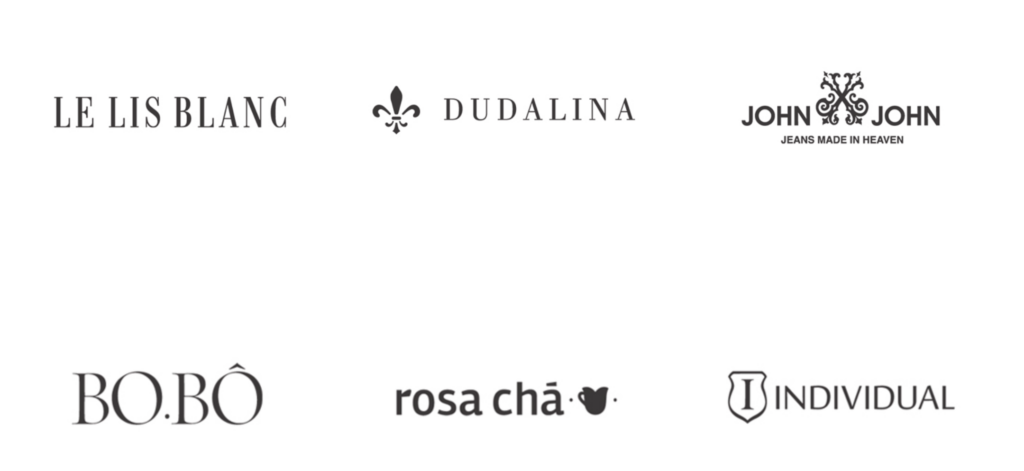Common Stock: Restoque (LLIS3)
Current Market Price: R$ 4.74
Market Capitalization: R$ 326.3 million
*All values in this article are expressed in Brazilian Reais (BRL) unless otherwise noted.
**The bulk of this analysis is based on the company’s most recent audited financial report, which can be found by following this link.

Restoque Stock – Summary of the Company
Restoque is a Brazilian clothing retailer operating 6 distinct brands. The majority of the company’s sales come from their own retail stores, which account for around 80% of sales. Wholesale channels account for around 15% of revenue with the remaining 5% coming from online sales.
They currently have 255 retail locations, in addition to 31 outlets and 33 franchise locations. They also have 2 manufacturing facilities and 2 distribution centers. Restoque was founded in 1984 and is headquartered in Sao Paulo, Brazil.

Revenue and Cost Analysis
Restoque has had declining revenue since 2017. In 2019 the company had revenue of R$ 954 million, a significant decrease from R$ 1.3 billion in 2017 and R$ 1.2 billion in 2018. Their COGS in 2019 was R$ 500.6 million, representing a gross margin of 47.5%, also a significant deterioration compared to 57% and 63% in 2017 and 2018 respectively.
The company had a net loss of R$ 193 million in 2019, however they were profitable in both 2017 and 2018.
Balance Sheet Analysis
Restoque has a weak balance sheet. The have poor liquidity and significant liabilities, including debt.
Restoque – Debt Analysis
As of year-end 2019 Restoque has total debt and financings outstanding of R$ 1.5 billion , R$ 652 million of which is classified as current.
Restoque Stock – Share Dynamics and Capital Structure
As of January 2021 Restoque has 68.8 million common shares outstanding. Insiders and institutional investors own around 76% of the company’s outstanding shares. The remaining 24% are owned by smaller shareholders with an ownership position of less than 5%.

Restoque Stock – Dividends
The company did not pay a dividend based on 2019’s results.
Restoque Stock – 3 Metrics to Consider
Debt to Equity Ratio
Total Liabilities/Total Share Holder Equity
R$ 2 billion / R$ 2.3 billion = .88
A debt to equity ratio of .88 indicates that Restoque uses a mix of nearly equal parts debt and equity in its capital structure, relying slightly more on equity financing.
Working Capital Ratio
Current Assets/Current Liabilities
R$ 996.5 million / R$ 1.2 billion = 87
A working capital ratio of .87 indicates a weak liquidity position. Restoque may have problems meeting its near term obligations. Investors should carefully monitor the company’s liquidity position moving forward.
Price to Book Ratio
Current Share Price/Book Value per Share.
R$ 4.74 / R$ 33.15 = .14
Based on total shares outstanding Restoque has a book value per share of R$ 33.15. At the current market price this implies a price to book ratio of .14, meaning the company’s stock currently trades at an extreme discount to the book value of the company.
Restoque Stock – Summary and Conclusions
Restoque is an interesting company. They have several well-known lifestyle clothing brands and are present throughout most of Brazil. However the company is in poor financial health. They have a weak liquidity position and high levels of debt. Top line revenue has been deteriorating and so have their gross margins. The company’s 2020 financials are likely to be even worse due to the coronavirus shutdowns.
The only intriguing thing I can see for investors is the extremely low price to book multiple. Although the stock may be overly beaten down, I can’t see a catalyst for a turn around and revaluation upward any time soon. For that reason I am not willing to invest in Restoque stock. I think there are more compelling Brazilian retailers that investors should consider, such as Alpargatas.
Disclaimer
This is not investment advice. Nothing in this analysis should be construed as a recommendation to buy, sell, or otherwise take action related to the security discussed. If I own a position in the security discussed, I will clearly state it.
This is not intended to be a comprehensive analysis and you should not make an investment decision based solely on the information in this analysis. I hope this serves as a useful starting point for a more comprehensive analysis, and hopefully draws attention to aspects of the company that were overlooked or merit further investigation. This is by no means intended to be a complete analysis. Again, this is not investment advice, do your own research.